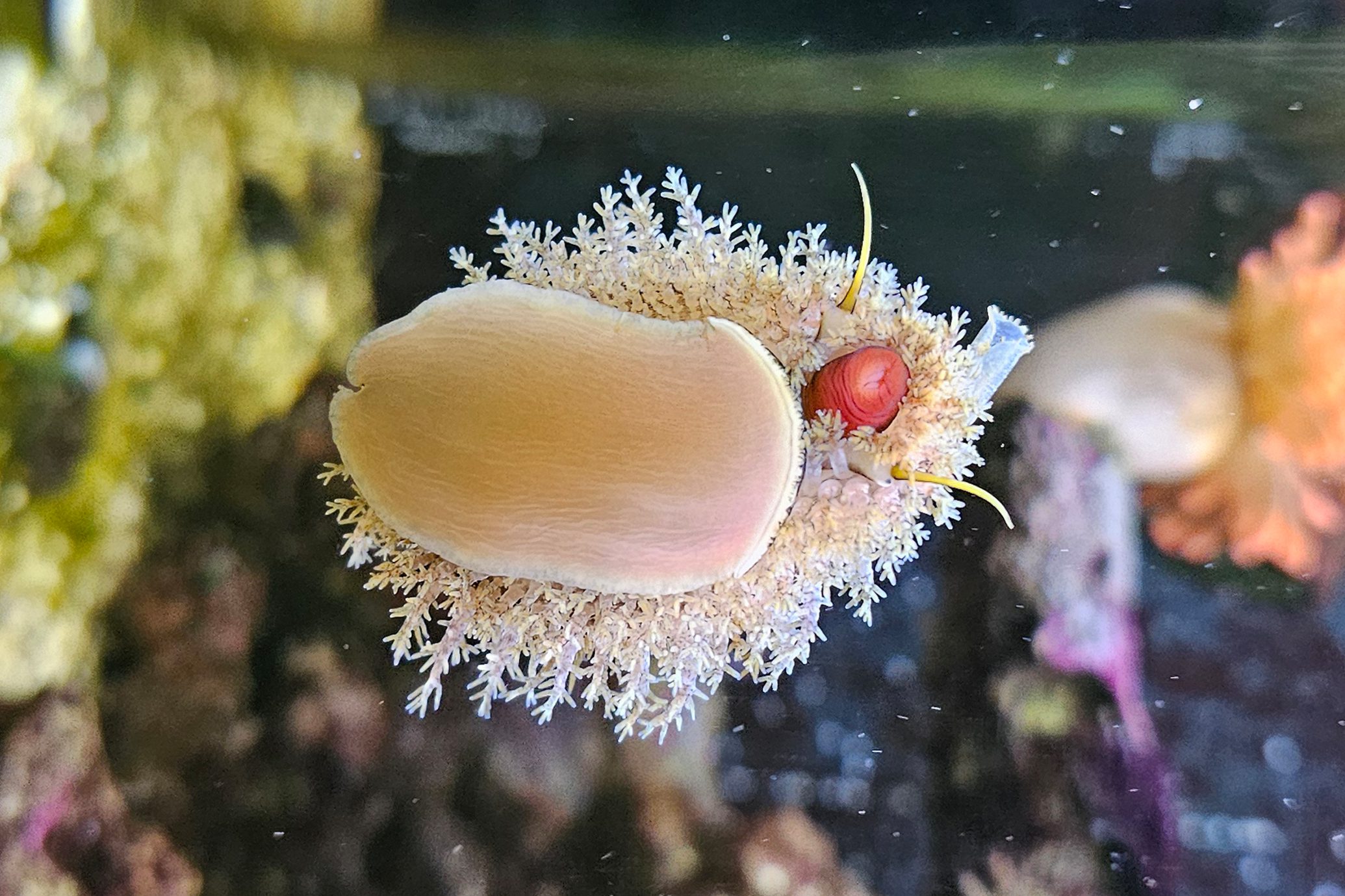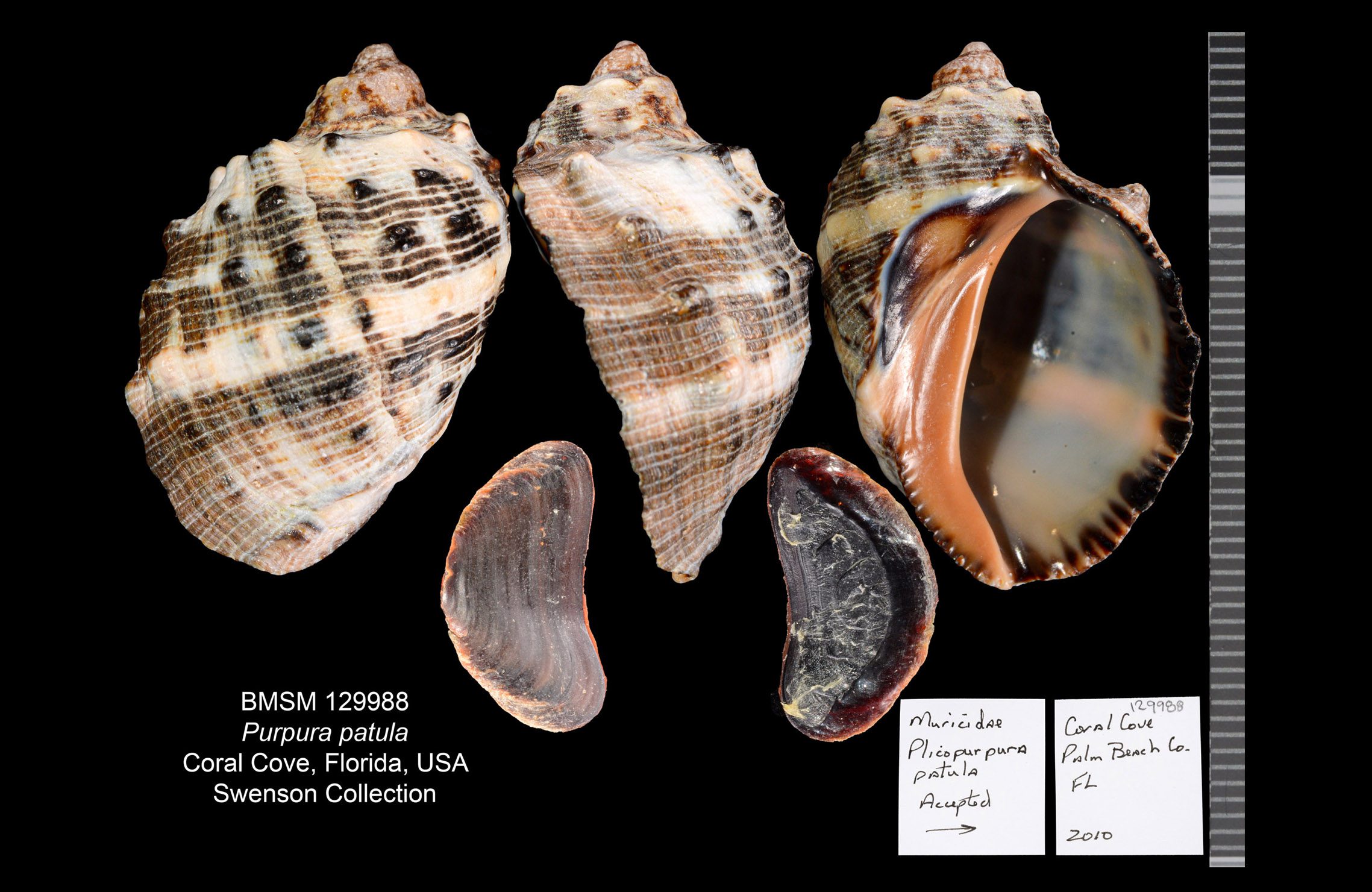Have you checked the Lewis’s Moon Snails in the National Shell Museum & Aquarium’s Living Gallery? Neverita lewisii is one of the most impressive (and active) mollusks in our Cold-water Touch Pool. The Pacific Northwest species is the largest in the moon snail family Naticidae, with its shell reaching 14 cm (5.5 inches) in size. When out of its shell, the snail can uptake water to fill hollow spaces in the mantle and foot. This expands the size of the animal and creates a large plow-like structure in front of the foot that is fundamental to the snails’ powerful burrowing motions.
 Neverita lewisii. Photo: José H. Leal.
Neverita lewisii. Photo: José H. Leal.
Lewis’s Moon Snails dig to hunt for their favorite food, bivalve mollusks. After finding a clam meal, a moon snail will envelop the bivalve with its expanded foot, pull the clam even deeper in the sand, and begin the drilling process. In the photo, notice the snail’s head, narrow tentacles, and siphon (arrow). The siphon is used to suck water in for respiration; water absorption for increase in body size takes place through the hollow spaces in the mantle and foot.
#neveritalewisii #lewissmoonsnail #northernmoonsnail #naticidae #pacificnorthwest


